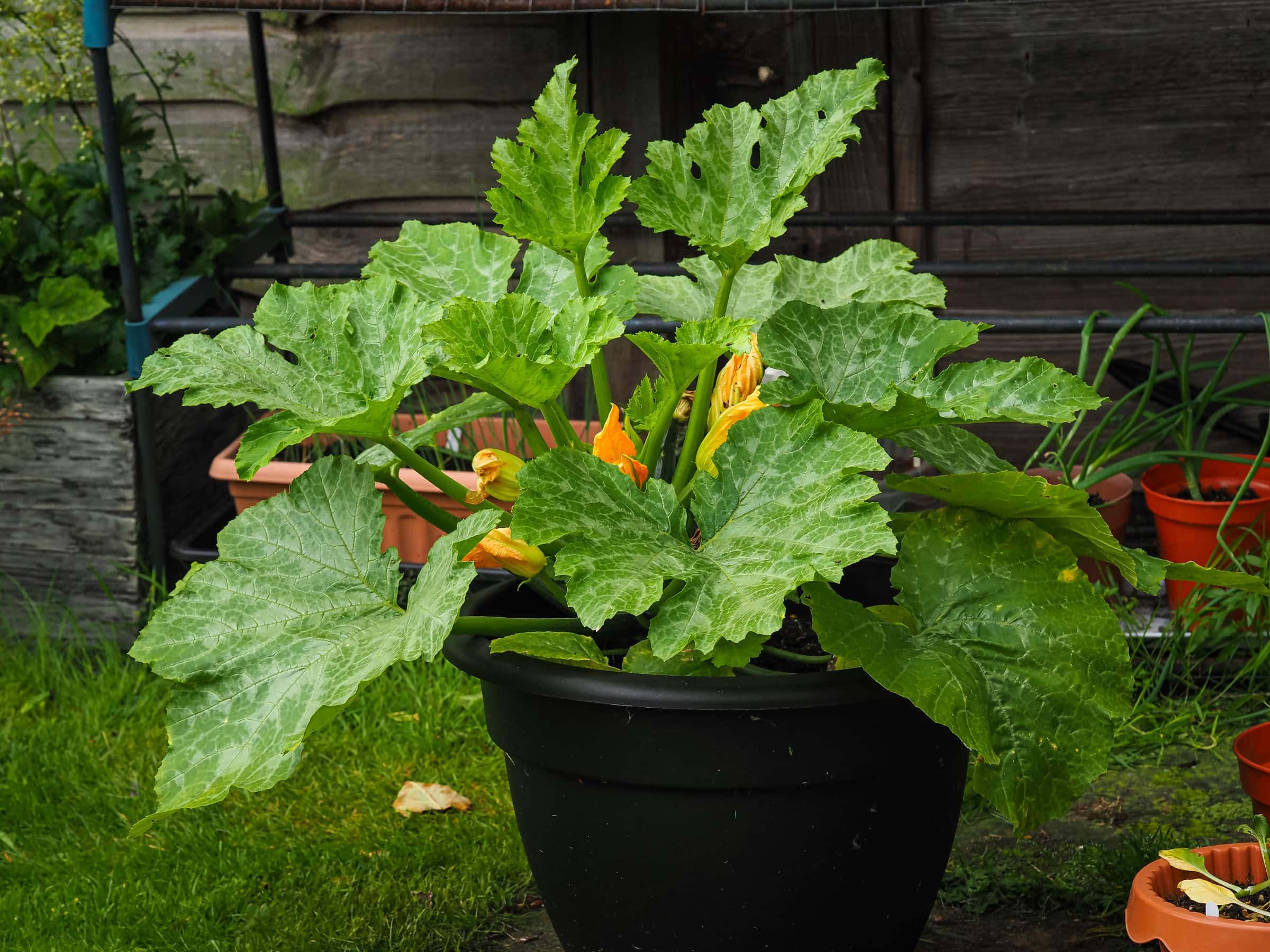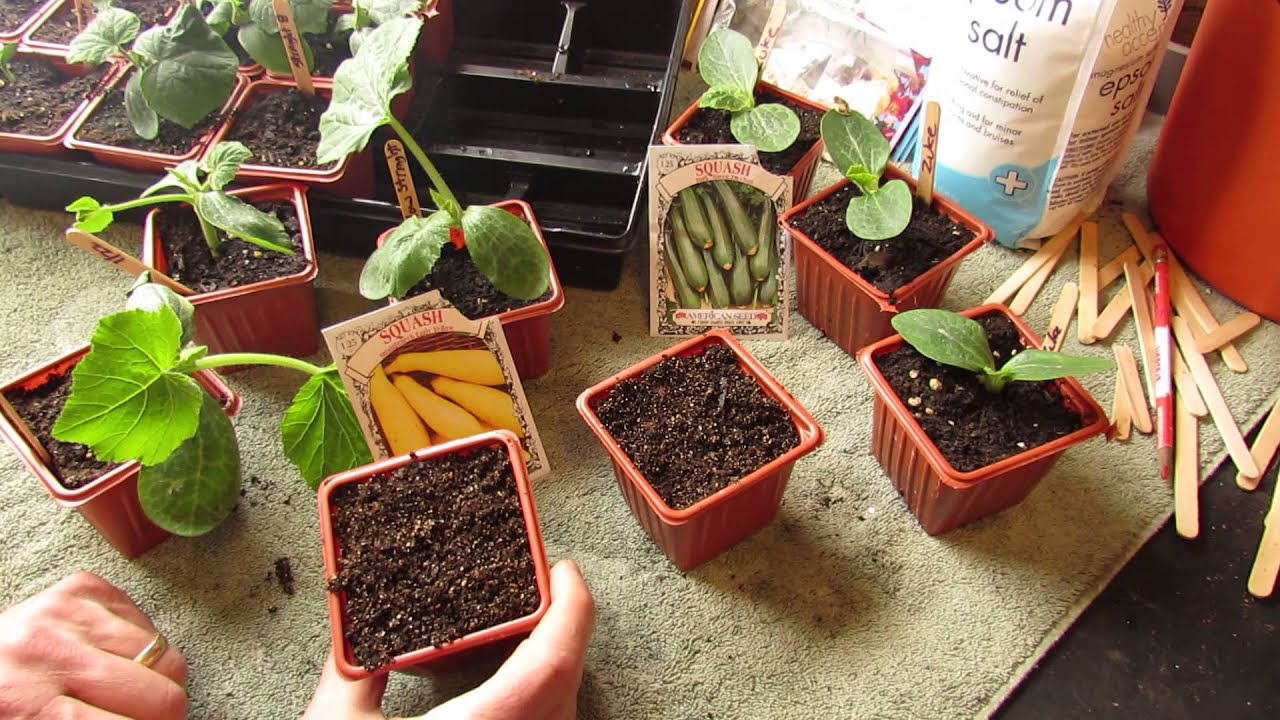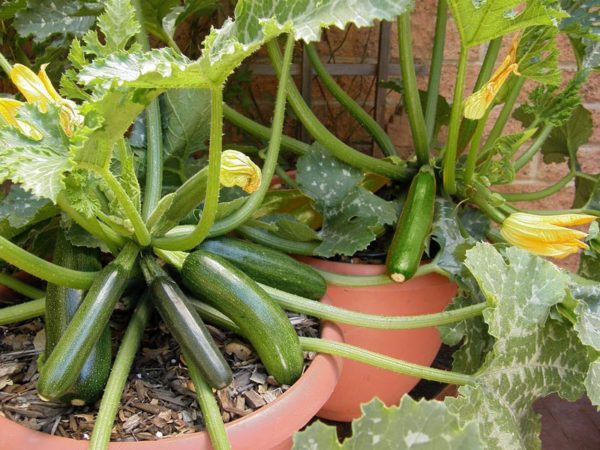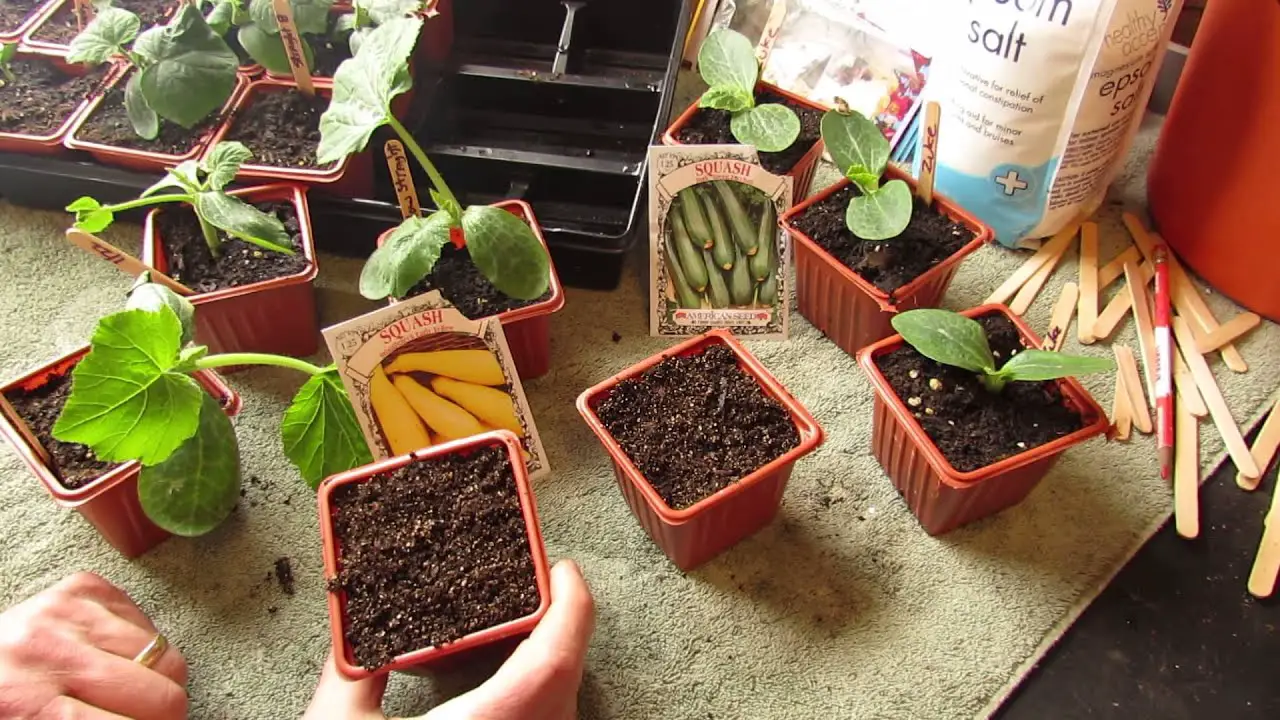Are you eager to start growing your own zucchini but don’t have much outdoor space? Look no further! This article will provide you with all the information you need to know about planting zucchini indoors. From the ideal time to get started to the essential tips for successful indoor zucchini cultivation, you’ll be well-equipped to embark on your indoor gardening adventure. So grab your gardening gloves and get ready to bring the joy of growing zucchini right into your home!
Choosing the Right Time
Understanding Zucchini Growth
Before delving into the specifics of when to plant zucchini indoors, it’s important to understand how zucchini grows. Zucchini, a warm-season vegetable, thrives in temperatures between 70-85°F (21-29°C). It requires ample sunlight and well-drained soil to reach its full potential. The average zucchini plant takes approximately 60 days from seed to harvest, with variations depending on the variety and environmental factors.
Deciding to Plant Indoors
Choosing to plant zucchini indoors offers several advantages to gardeners. By starting the plants indoors, you have control over the conditions in which the seedlings develop. This allows for optimal growth even before transplanting them outdoors. Planting indoors is also an excellent option for those living in regions with shorter growing seasons or unpredictable weather patterns. It provides an extended growing season and increases the chances of a successful zucchini harvest.
Factors to Consider
When deciding the right time to plant zucchini indoors, you must consider various factors. These include your local climate, the time it takes for zucchini to reach maturity, and your desired planting date for the outdoor garden bed. Additionally, it’s essential to determine the first expected frost date in your area as this will help you calculate when to start your zucchini seeds indoors.
Recommended Time Frame
To ensure a successful indoor zucchini planting, it is generally recommended to start seeds indoors four to six weeks before the last expected frost date. This timeframe allows for enough time to nurture the young seedlings and gives them a strong start before being transplanted outdoors. It is important to note that the last frost date varies depending on your location, so it’s crucial to consult a local agricultural extension office or use online resources specific to your region to determine the appropriate timing.
Preparing for Indoor Planting
Gathering Supplies
To begin your indoor zucchini planting adventure, gather the necessary supplies. You will need seed trays or pots, a suitable potting soil mix, and high-quality zucchini seeds. Other essential items include plant labels, a spray bottle for watering, and a small fan for gentle air circulation. Ensure that all materials are clean and sterile to minimize the risk of disease or pests.
Creating an Ideal Environment
Zucchini seedlings require specific environmental conditions for optimal growth. Find a location in your home that receives ample sunlight or use grow lights to provide the necessary light intensity and duration. Ideally, the temperature should be between 70-85°F (21-29°C). To maintain these conditions, consider using a seedling heat mat or placing the seed trays near a heating vent. Proper ventilation is crucial, so ensure there is gentle airflow to prevent damping off disease.
Selecting Potting Soil
Selecting the right potting soil is key to providing your zucchini seedlings with a healthy start. Look for a well-draining mix specifically formulated for seed starting or vegetable gardening. Avoid heavy garden soil or compost, as they can impede drainage and cause root rot. The potting soil should be loose and lightweight, allowing for easy root penetration and sufficient aeration.
Sowing Seeds
When sowing zucchini seeds indoors, follow the instructions on the seed packet for depth and spacing. Typically, you will plant the seeds about 1 inch (2.5 cm) deep and space them 2-3 inches (5-7.5 cm) apart. Water the soil gently using a spray bottle, ensuring it remains moist but not waterlogged. Cover the seed trays or pots with plastic wrap or a humidity dome to create a mini greenhouse effect, promoting seed germination.

Providing Optimal Growth Conditions
Maintaining Ideal Temperature
To ensure the healthy growth of your zucchini seedlings, maintaining an ideal temperature is crucial. During seed germination, a temperature of around 80°F (27°C) is optimal. Once the seedlings emerge, adjust the temperature to a range between 70-75°F (21-24°C) during the day and slightly cooler at night. This temperature range mimics the conditions zucchini plants thrive in and encourages healthy leaf and root development.
Ensuring Sufficient Light
Proper light exposure is essential for robust zucchini seedlings. When growing indoors, zucchini plants require at least 12-16 hours of direct or artificial light each day. If natural sunlight is limited, supplement it with fluorescent grow lights or LED lamps designed for plant growth. Position the lights about 2-3 inches (5-7.5 cm) above the seedlings, adjusting the height as the plants grow to maintain an optimal distance.
Optimizing Humidity Levels
Humidity is another important factor in zucchini seedling care. Young zucchini plants prefer humidity levels around 70-80%. To achieve this, mist the seedlings daily with water from a spray bottle. Alternatively, you can use a humidity tray or a small humidifier placed near the seedlings. Avoid misting the plants late in the day to prevent excess moisture on the leaves overnight, which can lead to diseases.
Watering and Nourishing
Proper watering is essential for healthy zucchini seedlings. Water the plants when the top inch (2.5 cm) of the potting soil feels dry to the touch. Use a watering can or spray bottle to distribute water gently, ensuring it reaches the root zone without causing soil disturbance. It’s crucial to strike a balance and avoid overwatering, which can lead to root rot or damping off disease. Once the seedlings have established true leaves, start fertilizing with a balanced liquid fertilizer according to the package instructions.
Transplanting Seedlings Outdoors
Determining the Right Time
Transplanting zucchini seedlings outdoors requires careful consideration of both temperature and soil conditions. Zucchini plants thrive when the soil temperature is consistently above 60°F (15°C). The danger of frost should have passed, and the soil should be well-drained and rich in organic matter. Before transplanting, harden off the seedlings by gradually exposing them to outdoor conditions over a period of 7-10 days.
Preparing the Outdoor Bed
Prepare the outdoor garden bed for your zucchini plants before transplanting the seedlings. Choose a sunny location with at least six hours of direct sunlight per day. Amend the soil with organic matter, such as compost or well-rotted manure, to improve fertility and drainage. Remove any weeds or rocks that could hinder the growth of the young zucchini plants. Once the soil is prepared, dig holes spaced 3-4 feet (0.9-1.2 meters) apart, leaving enough space for the mature plants’ sprawling nature.
Hardening Off Seedlings
Hardening off is a crucial step in the process of transitioning seedlings from the controlled indoor environment to the unpredictability of the outdoors. Begin by placing the seedlings outdoors for a few hours in a sheltered location with indirect sunlight. Gradually increase their exposure to direct sunlight and outdoor conditions over the next week. Protect the seedlings from strong winds, heavy rain, and extreme temperatures during this period, and bring them indoors at night if necessary.
Transplanting with Care
When the seedlings are adequately hardened off, it’s time to transplant them into the outdoor bed. Gently remove the seedlings from their pots or trays, taking care not to damage their delicate roots. Dig a hole slightly larger than the root ball and place the seedling in the hole, ensuring it is at the same depth as it was in the pot. Backfill the hole with soil, firmly pressing it around the plant’s base without compacting it too much. Water thoroughly to eliminate air pockets and settle the soil.

Dealing with Unexpected Frost
Recognizing Frost Risks
Despite our best efforts, unexpected frost can pose a threat to zucchini plants. Frost occurs when temperatures fall below 32°F (0°C) and can damage or even kill young seedlings. It’s important to be prepared and understand the signs of impending frost to protect your valuable plants.
Protecting Seedlings
To protect your zucchini seedlings from frost, cover them with fabric or a frost blanket. Lightweight fabric, such as row covers or old bedsheets, can act as a barrier, shielding the plants from direct contact with freezing air. Secure the fabric tightly around the seedlings, ensuring there is no slippage or exposure to cold air. This protective layer increases the air temperature around the plants, providing them with some insulation against frost damage.
Utilizing Frost Blankets
Frost blankets are specifically designed to protect plants from frost and chilling winds. These blankets are made from breathable material that allows sunlight, water, and air to reach the plants while providing insulation. Place the frost blanket over the seedlings and secure it with stakes or rocks to prevent it from blowing away. Frost blankets come in various sizes and can be reused season after season, making them a worthwhile investment for gardeners in frost-prone areas.
Alternative Solutions
In the event that frost is forecasted, but you are unable to cover your zucchini seedlings, there are alternative remedies to mitigate potential damage. Water the plants thoroughly before the frost sets in. The heat generated during the freezing process can help protect the plants. Additionally, if feasible, try relocating the seedlings to a more sheltered area, such as a garage or covered porch, until the freezing temperatures pass.
Addressing Common Problems
Damping Off Disease
Damping off is a common fungal disease that affects young zucchini seedlings, causing them to wilt and eventually collapse. To prevent this disease, use sterile soil and containers, avoid overwatering, and practice good ventilation. If damping off does occur, remove the affected seedlings promptly, improve air circulation, and adjust watering practices.
Pest Infestations
Zucchini plants are susceptible to various pests, including aphids, squash bugs, and cucumber beetles. Regularly inspect your plants for signs of infestations, such as yellowing leaves or distorted growth. To control pests, use organic insecticidal sprays, introduce beneficial insects like ladybugs, or employ physical barriers such as row covers.
Nutrient Deficiencies
Zucchini plants require adequate nutrition for healthy growth and fruit development. Common nutrient deficiencies in zucchini include nitrogen, phosphorus, and potassium. Regularly monitor the plants for yellowing leaves, stunted growth, or poor fruiting as signs of nutrient deficiencies. Address these issues by using organic fertilizers or amendments tailored to the needs of zucchini plants.
Overwatering and Root Rot
Overwatering zucchini plants can lead to root rot, depriving the plants of oxygen and causing root decay. To avoid this issue, water the plants deeply but infrequently, allowing the soil to dry out partially between waterings. Ensure proper drainage in the garden bed and avoid watering late in the day to prevent excess moisture lingering on the foliage.

Harvesting Zucchini
Monitoring Growth Stages
Once your zucchini plants start flowering, it’s essential to monitor the growth stages for optimal harvest timing. Young zucchini fruits are tender and flavorful, while larger ones can become tough and less desirable. Harvest zucchini when the fruits are approximately 6-8 inches (15-20 cm) long and the skin is still shiny and easily punctured with a fingernail. Regularly inspect the plants and harvest mature zucchini every couple of days to encourage continuous production.
Proper Harvesting Techniques
To harvest zucchini, use a sharp knife or pruning shears to cut the fruit from the plant, leaving a small portion of the stem attached. Be careful not to damage the plant while harvesting. It’s best to harvest zucchini while they are still on the smaller side, as larger fruits might have developed tough skin and larger seeds. Excessively large zucchini can be used for baking or shredding into various dishes.
Preserving and Storing Zucchini
If you have an abundant zucchini harvest, you can preserve the surplus by freezing, canning, or dehydrating the fruit. Freezing zucchini involves blanching the prepared slices or cubes in boiling water, followed by rapidly cooling them in an ice bath before placing them in freezer bags. Alternatively, you can grate or slice the zucchini for canning or use a food dehydrator to dry them for later use in soups, stews, or baked goods.
Seed Saving for Future Planting
Saving zucchini seeds allows you to continue growing your preferred varieties for future seasons. To save seeds, allow one or two healthy fruits to grow beyond the harvest stage until they turn yellow and mature fully on the vine. Remove the seeds from the fruit, clean them, and dry them thoroughly before storing them in a cool, dry location. Label the seeds with the variety and the date they were collected for easy reference.
Other Considerations
Choosing Zucchini Varieties
When planning your zucchini garden, consider the different varieties available and choose those that best suit your preferences and growing conditions. Varieties differ in shape, color, size, and flavor. Some popular zucchini varieties include ‘Black Beauty,’ ‘Golden Dawn,’ and ‘Costata Romanesco,’ each with unique characteristics and adaptability to various climates.
Companion Planting
Using companion planting techniques can benefit your zucchini plants by promoting healthy growth, deterring pests, and maximizing space in your garden. Plant zucchini alongside compatible companions such as basil, dill, marigolds, or nasturtiums. These companion plants can attract pollinators, repel pests, or provide natural shade to the zucchini plants.
Crop Rotation
To prevent soil-borne diseases and maintain soil fertility, practice crop rotation with your zucchini plants. Avoid planting zucchini or any other members of the squash family in the same location year after year. Rotate zucchini with unrelated vegetables in your garden, following a three-year cycle. This ensures that pests and diseases specific to zucchini and other squash varieties do not build up in the soil.
Continued Plant Care
Even after successfully transplanting your zucchini seedlings outdoors, the work is not over. Zucchini plants require regular care and attention throughout the growing season. This includes watering deeply when necessary, monitoring for pests and diseases, and providing support for sprawling vines if desired. Regularly remove weeds to reduce competition for resources and mulch around the base of the plants to conserve soil moisture and deter weed growth.

The Benefits of Indoor Planting
Extended Growing Season
One of the most significant benefits of planting zucchini indoors is the ability to extend the growing season. Starting the plants indoors allows you to get a head start before transplanting them outside when weather conditions are favorable. This means you can enjoy fresh zucchini earlier in the season and potentially harvest more abundant yields.
Protection from External Factors
By planting zucchini indoors, you shield the delicate seedlings from external factors that can hinder their growth outdoors. Young zucchini plants are susceptible to cold temperatures, pests, diseases, and weather fluctuations. Growing them in a controlled environment allows you to protect them from these threats, ensuring healthier plants and increasing the chance of a successful harvest.
Greater Control over Conditions
Indoor planting grants you greater control over the growing conditions of your zucchini seedlings. You can tailor the environment to their specific needs, including temperature, light exposure, and humidity levels. This control allows for optimal growth and a higher chance of producing vigorous, healthy plants ready for transplantation.
Early Harvesting Opportunities
Another advantage of planting zucchini indoors is the opportunity for early harvesting. Starting the seeds indoors allows you to take advantage of the warm and consistent conditions provided by your home or greenhouse. Consequently, you can enjoy a bountiful zucchini harvest before the outdoor growing season even begins. Early harvests mean you can savor the fresh, tender fruit when it’s at its peak flavor.
Conclusion
In conclusion, planting zucchini indoors offers numerous benefits, including an extended growing season, protection from external factors, greater control over growing conditions, and early harvesting opportunities. By understanding zucchini growth, preparing the seedlings indoors, ensuring optimal growth conditions, transplanting with care, addressing common problems, and implementing proper harvesting techniques, you can have a successful zucchini crop. So go ahead and embrace the joys of indoor planting, and delight in the versatility of this remarkable vegetable. Happy gardening!




